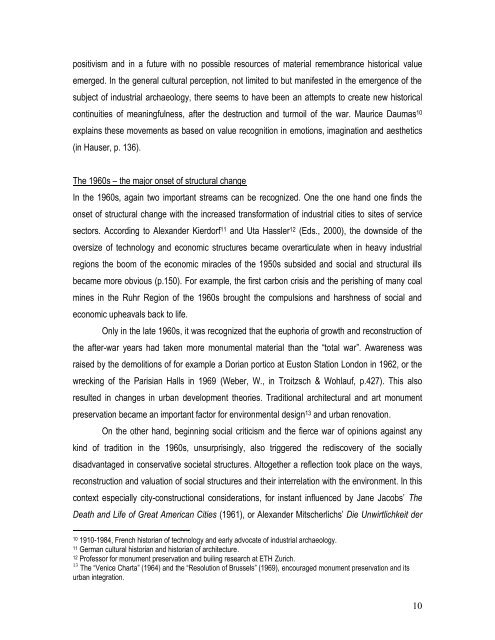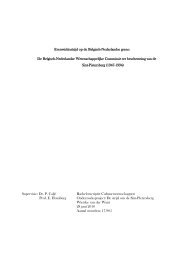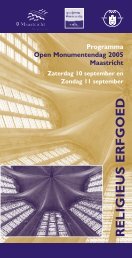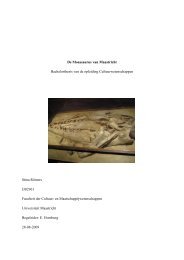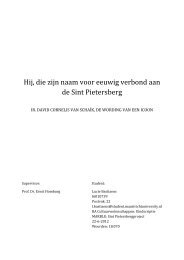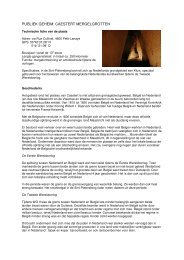ENCI - FUTURE CHANCE FOR MAASTRICHT'S INDUSTRIAL ...
ENCI - FUTURE CHANCE FOR MAASTRICHT'S INDUSTRIAL ...
ENCI - FUTURE CHANCE FOR MAASTRICHT'S INDUSTRIAL ...
Create successful ePaper yourself
Turn your PDF publications into a flip-book with our unique Google optimized e-Paper software.
positivism and in a future with no possible resources of material remembrance historical value<br />
emerged. In the general cultural perception, not limited to but manifested in the emergence of the<br />
subject of industrial archaeology, there seems to have been an attempts to create new historical<br />
continuities of meaningfulness, after the destruction and turmoil of the war. Maurice Daumas 10<br />
explains these movements as based on value recognition in emotions, imagination and aesthetics<br />
(in Hauser, p. 136).<br />
The 1960s – the major onset of structural change<br />
In the 1960s, again two important streams can be recognized. One the one hand one finds the<br />
onset of structural change with the increased transformation of industrial cities to sites of service<br />
sectors. According to Alexander Kierdorf 11 and Uta Hassler 12 (Eds., 2000) , the downside of the<br />
oversize of technology and economic structures became overarticulate when in heavy industrial<br />
regions the boom of the economic miracles of the 1950s subsided and social and structural ills<br />
became more obvious (p.150). For example, the first carbon crisis and the perishing of many coal<br />
mines in the Ruhr Region of the 1960s brought the compulsions and harshness of social and<br />
economic upheavals back to life.<br />
Only in the late 1960s, it was recognized that the euphoria of growth and reconstruction of<br />
the after-war years had taken more monumental material than the “total war”. Awareness was<br />
raised by the demolitions of for example a Dorian portico at Euston Station London in 1962, or the<br />
wrecking of the Parisian Halls in 1969 (Weber, W., in Troitzsch & Wohlauf, p.427). This also<br />
resulted in changes in urban development theories. Traditional architectural and art monument<br />
preservation became an important factor for environmental design 13 and urban renovation.<br />
On the other hand, beginning social criticism and the fierce war of opinions against any<br />
kind of tradition in the 1960s, unsurprisingly, also triggered the rediscovery of the socially<br />
disadvantaged in conservative societal structures. Altogether a reflection took place on the ways,<br />
reconstruction and valuation of social structures and their interrelation with the environment. In this<br />
context especially city-constructional considerations, for instant influenced by Jane Jacobs’ The<br />
Death and Life of Great American Cities (1961), or Alexander Mitscherlichs’ Die Unwirtlichkeit der<br />
10 1910-1984, French historian of technology and early advocate of industrial archaeology.<br />
11 German cultural historian and historian of architecture.<br />
12 Professor for monument preservation and builing research at ETH Zurich.<br />
13 The “Venice Charta” (1964) and the “Resolution of Brussels” (1969), encouraged monument preservation and its<br />
urban integration.<br />
10


